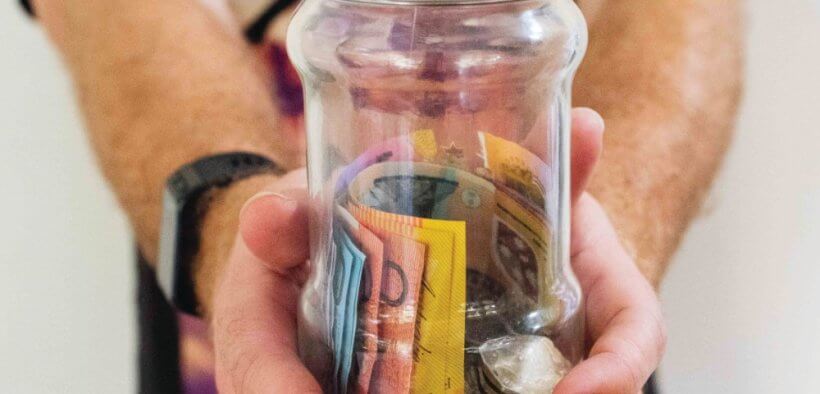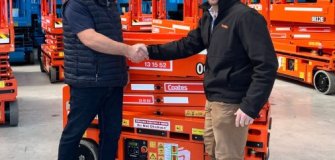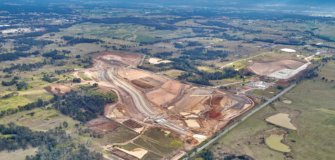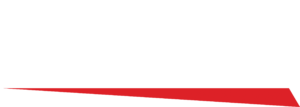How does your business measure up?
Martin Sinclair Nov 18

According to a recent Ibis world industry report, the Hire and Rental Industry is forecasted to contract by up to 5.9% in the 2023 financial year. This is predicted to be followed by several years of modest growth until 2028, when the industry will finally recover back to its 2022 financial year levels.
If this is the case, how are you planning on navigating the next few years?
If the answer is that you are not sure, then now might be the time to revisit your cashflow forecast and Return on Assets for the years ahead.
HRIA Accounting and Business Advisory Partner, HLB Mann Judd, will be hosting a webinar offering best-practice tips on managing cash flow tomorrow (22nd November). To join the webinar, please click the link below.
Why measure Return on Assets (ROA) and Cashflow?
The ROA is a ratio that measures the return that you are generating on your assets. The higher the ROA, the more efficient the business is in utilising its assets to generate profits. It’s a measure that allows you to compare the contribution of each of your assets on your businesses profitability and therefore assists you with making purchasing decisions.
Cashflow on the other hand measures the impact of your assets and purchasing decisions on your bank account balance. Something we all want to see go up!
How do you forecast these?
We’ll answer this by giving a simple example. Let’s assume your business is constantly getting requests for a specific piece of equipment that you do not currently own. So, you gather some information, including; overhead and direct costs per piece of equipment, the cost of the equipment, what you think you can hire it out for, how often you think it will be hired and then you calculated the ROA and cashflow so you can make an informed purchasing decision.
Return on Assets
Below we have two scenarios, one where the new piece of equipment will generate revenue of $26,000 and the other with revenue of $19,000. As you can see, scenario 1 achieves a ROA of 35% and scenario 2 achieves a 24% ROA. This means that for every $1 that the business invests in assets, it receives $0.35 or $0.24 in profit respectively.
| Scenario 1 | Scenario 2 | |
| Cost of equipment (Inc GST) | $55,000 | $55,000 |
| Finance cost | $8,000 | $8,000 |
| Total cost | $63,000 | $63,000 |
| Yearly repayment over 4 years | $15,750 | $15,750 |
| Revenue (ex GST) | $26,000 | $19,000 |
| Overhead cost (ex GST) | ($4,000) | ($4,000) |
| Net profit before tax | $22,000 | $15,000 |
| ROA | 35% | 24% |
A return of between 24% to 35% is pretty good right? However, does it make sense from a cashflow perspective?
Cashflow
Cashflow is the fuel that runs the economic engine of every business. Too little, and your business will stall, and you will never be able to get to where you want to be.
Let’s look at the cashflow impact of the previous two scenarios.
Scenario 1
| Year 1 | Year 2 | Year 3 | Year 4 | |
| Revenue | $26,000 | $26,000 | $26,000 | $26,000 |
| Overhead cost | ($4,000) | ($4,000) | ($4,000) | ($4,000) |
| GST refund | $5,000 | |||
| Yearly repayment | ($15,750) | ($15,750) | ($15,750) | ($15,750) |
| Cashflow | $11,250 | $6,250 | $6,250 | $6,250 |
As demonstrated above, if this piece of equipment achieves the forecasted 35% ROA in scenario 1, then the purchase will have a positive cashflow contribution to the business every year it is held.
Scenario 2
| Year 1 | Year 2 | Year 3 | Year 4 | |
| Revenue | $19,000 | $19,000 | $19,000 | $19,000 |
| Overhead cost | ($4,000) | ($4,000) | ($4,000) | ($4,000) |
| GST refund | $5,000 | |||
| Yearly repayment | ($15,750) | ($15,750) | ($15,750) | ($15,750) |
| Cashflow | $4,250 | ($750) | ($750) | ($750) |
On the other hand, while scenario 2 provides a ROA of 24%, it does not provide a positive cashflow for years 2 to 4. Overall, the asset provides positive cashflow, especially if you include the sale proceeds on the equipment if you sell it after 4 year or if you continue to hire out the assets beyond 4 years. However, this example illustrates that there could be periods of negative cashflow that you need to manage. If you have a lot of assets with a similar cashflow profile, then you may find yourself in trouble.
Negative cashflow is not abnormal, in fact according to a recent survey conducted by Xero, 9 out of 10 small businesses struggle with negative cash flow at least once a year and 1 in 5 are plagued for 6 months with expenses greater than revenue. Nevertheless, long periods of negative cashflow can destroy a business.
The above is a simplified example but hopefully it shows why cashflow forecasting is so important as a tool to help you plan and address challenges before they occur.
How do we use this information?
Now that you have your forecast, you should ask yourself the following questions.
- How does this ROA compare to other assets in my business?
- What levers can I pull to improve my ROA and/or cashflow?
- Will this purchase impact the utilisation of any of our other assets?
- Imagine you are wrong, what will I do if my ROA is worse than forecast?
- Is the cashflow generated sufficient to manage my other obligations and requirements?
- Should anyone else be involved in this decision and this process? (E.g. maybe this is an opportunity to educate the next generation in management decisions)
Hopefully after answering these questions your decision should be clear.
However, don’t stop there. Perform the same process for all of your existing assets to see how your business will perform over the coming years. Used correctly and consistently, this process may be what sets your business apart.
If you need or want a hand, get in touch and we can work through it together: aash@hlbnsw.com.au or 02 9020 4357.










